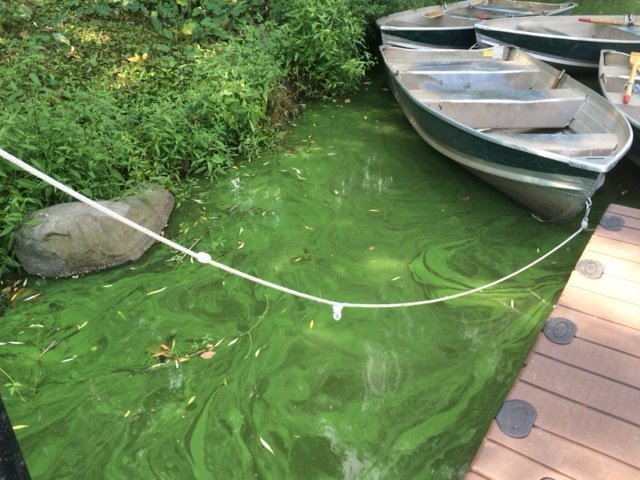MakingWaves - Great Lakes B-WET RFP; Laws to Increase Resilience; Water Smart Landscapes; HABs Notifications; Reducing Sauquoit Creek Flood Risk
The New York State Department of Environmental Conservation sent this bulletin on 06/11/2021 11:03 AM EDT |
| DEC Delivers - Information to keep you connected and informed from the NYS Department of Environmental Conservation |
| Share or view as a web page || Update preferences or unsubscribe |
Making Waves - News From the Division of Water |
In This Issue:
Great Lakes Bay Watershed Education and Training (B-WET) GrantThe National Oceanic and Atmospheric Administration (NOAA) Office of National Marine Sanctuaries (Thunder Bay National Marine Sanctuary office) is seeking proposals under the Great Lakes Bay Watershed Education and Training (B-WET) program through September 9, 2021. The Great Lakes B-WET program is an environmental education program that supports locally relevant, authentic experiential learning in the K-12 environment. Funded projects provide Meaningful Watershed Educational Experiences for students, related professional development for teachers, and help to support regional education and environmental priorities in the Great Lakes. The Great Lakes B-WET program awards are funded through the Great Lakes Restoration Initiative. NY’s Great Lakes Ecosystem Education Exchange resources and partnerships are available to help with project applications. Email greatlakes@dec.ny.gov to connect. Register to attend an informational webinar to be held at on June 23 at 10:30 a.m. Model Local Laws to Increase Resilience--Webinar Recording and ResourcesDEC’s Hudson River Estuary Program recently hosted a webinar on Model Local Laws to Increase Resilience, featuring Barbara Kendall from NYS Department of State and Mark Lowery from DEC.
Water Smart Landscapes
DEC encourages landowners to consider planting water-smart landscapes to conserve water this summer. If you are designing a new landscape or rethinking your current one, EPA's WaterSense webpages can help you plan your landscape and choose plants that are drought tolerant for your area. As an Environmental Protection Agency WaterSense partner, DEC encourages you to find ways to use less water. Harmful Algal Bloom Notifications
DEC’s harmful algal bloom (HABs) notification season has begun. HABs notifications will be updated through the fall using an online reporting and notification system dubbed NYHABS. The system includes an interactive map that shows reports of freshwater HABs, as well as a public reporting system. Instructions on how to use NYHABS are on DEC's HABs notification page. Know it: If you see a HAB, please use the reporting form to submit a report to NYHABS. Avoid it: Because waterbodies may have HABs that have not been reported to DEC, we recommend avoiding contact with floating mats, scums and discolored water. Report it: If you, your family, or pet have been in contact with a HAB, please rinse with clean water and report any symptoms to your local health department. New York State and Town of Whitestown to Construct New Floodplain Benches and Install Additional Culverts to Mitigate Future Sauquoit Creek Flood RiskConstruction will begin this month on a $3.9 million flood mitigation project to bolster resilience and improve habitats along the Sauquoit Creek in the Mohawk Valley. The project will create a new 12-acre floodplain bench -- with plantings, stream bank stabilization, erosion and sediment control facilities -- and install five, 48-inch diameter culverts under the CSX Railroad embankment. This project will reduce flood water elevations and increase water flow from the Sauquoit Creek to the Mohawk River, mitigating future flood risk. The Town of Whitestown is administering the project with funding support from the departments of Transportation and Environmental Conservation, Environmental Facilities Corporation, and the Dormitory Authority of New York State.
|


